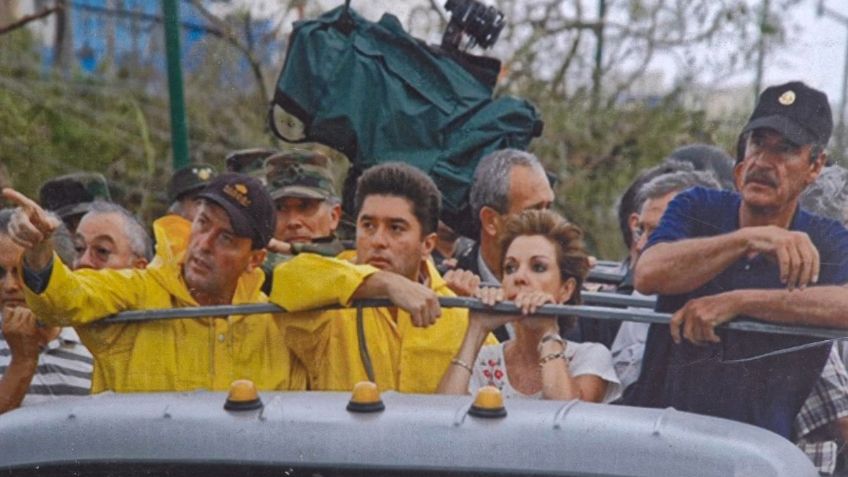Quintana Roo, Mexico — Former government officials from past administrations have recalled the impact of Hurricane Wilma, which struck this southern region of the country 20 years ago. The Category 5 cyclone is considered one of the most powerful Atlantic hurricanes on record.
This October 21 marks the 20th anniversary of Hurricane Wilma's passage, which caused devastation across northern Quintana Roo. For more than 60 hours, the cyclone inflicted major damage to homes, communication routes, and tourism infrastructure in Cancún, Puerto Morelos, Isla Mujeres, Cozumel, and Playa del Carmen.
“Many claimed this was the end and almost the certain death of Cancún, which certainly bothered me, but it also stung because if we already survived Gilbert, what can't we handle with Wilma," recalled John McCarty, former Director General of the National Fund for Tourism Development (Fondo Nacional del Fomento al Turismo) during the Vicente Fox administration.
Through a conversation organized by the Sociedad Andrés Quintana Roo, the former federal official shared his experience alongside other key actors in the events, detailing how the emergency was managed and the challenges it presented.
Although there was the precedent of Hurricane Gilbert in 1988 and Hurricane Emily earlier that same year, neither approached the devastation left by their predecessor. In addition to its 230-kilometer-per-hour winds, the hydrometeorological phenomenon stalled over the region.
“‘Emily’ was the best training, because, although it hit us in a different area, we were able to run the drill of evacuating the hotel zone, the communication plans, the contingency plans, and the airport plans,” said Gabriela Rodríguez, then Secretary of Tourism for Quintana Roo.
Once the cyclone left the territory, the images from the destination were atrocious. The hurricane not only razed hotels and shopping plazas but also unleashed a wave of insecurity, looting, and fear due to supply shortages and economic uncertainty.
“We had very hard days; there was no communication. The banks weren't working, there was no money. The cash was in a Bancomer warehouse that had flooded and everything was ruined, so to go out to eat we had to ask for favors, we would sign them a document, a promissory note. Our situation was privileged,” McCarty said.
With more than 500,000 inhabitants and 40,000 stranded tourists in Cancún, the challenge was to enable basic services and reactivate the destination's connection to the world. Brigades from the army, navy, and the Federal Electricity Commission (Comisión Federal de Electricidad) gradually arrived from across the country.
“The hurricane followed the most destructive route. It entered the center of Cozumel, arrived at Playa del Carmen, and turned onto the main avenue, took the federal highway and went on to shave off all the most important hotels in Latin America. I remember flying over the hotel zone with President Fox, Emilio Azcárraga Jean, and someone from TvAzteca, and they were all crying,” recalled the former state governor, Félix González.
The PRI member indicated that the reconstruction after the passage of Wilma exceeded the amount invested to found Cancún. The damage assessment to the municipality's public assets was estimated at 600 million pesos. The federal government allocated 100 million pesos for the hotel zone, while insurance companies paid 2.5 billion dollars in policy payouts to hotels and businesses.
Although the wound has healed, this hurricane left a deep scar that remains in those who lived through it and those who helped rebuild Quintana Roo, an experience the region has not repeated on that scale in 20 years.
Discover more from Riviera Maya News & Events
Subscribe to get the latest posts sent to your email.
